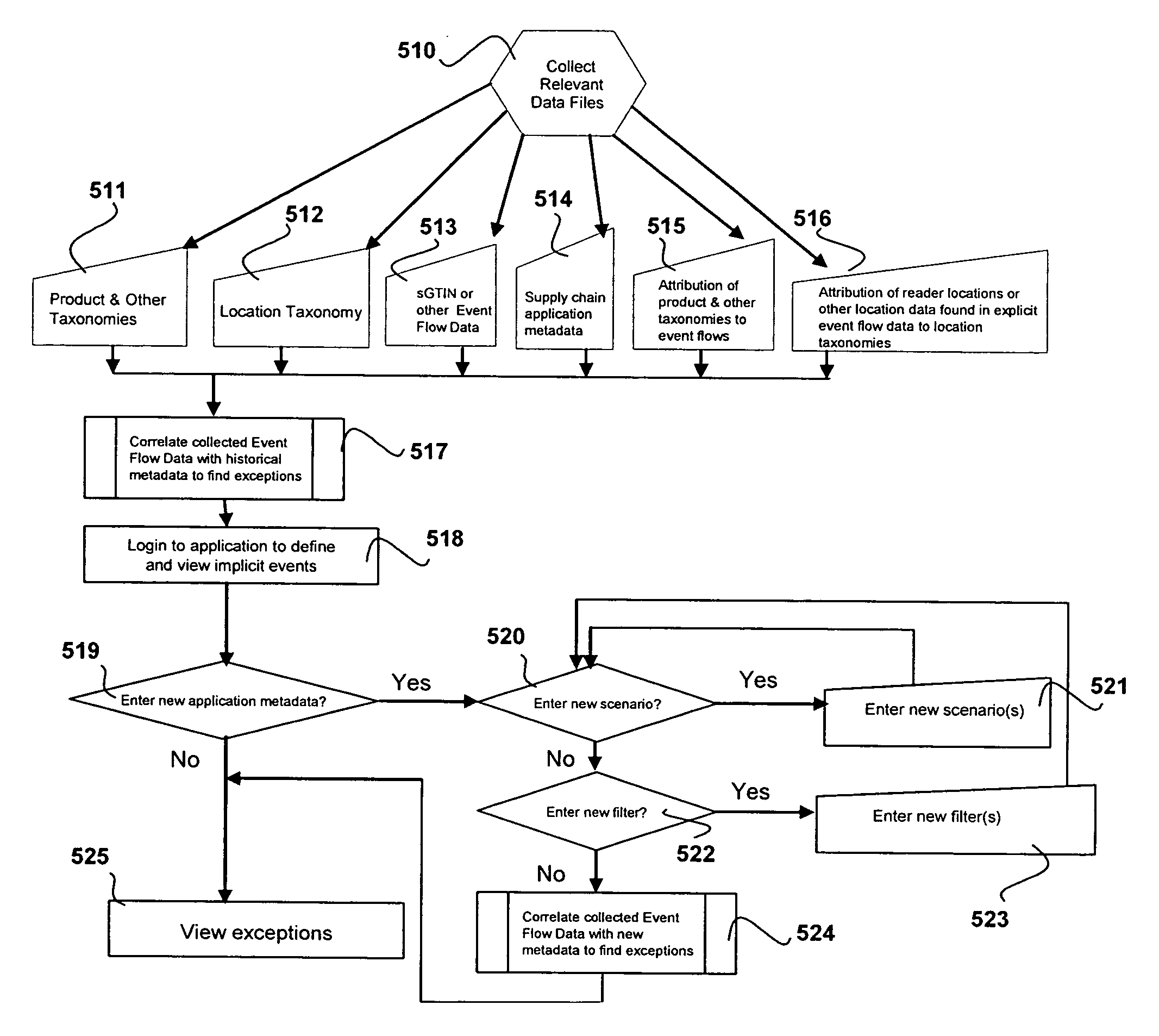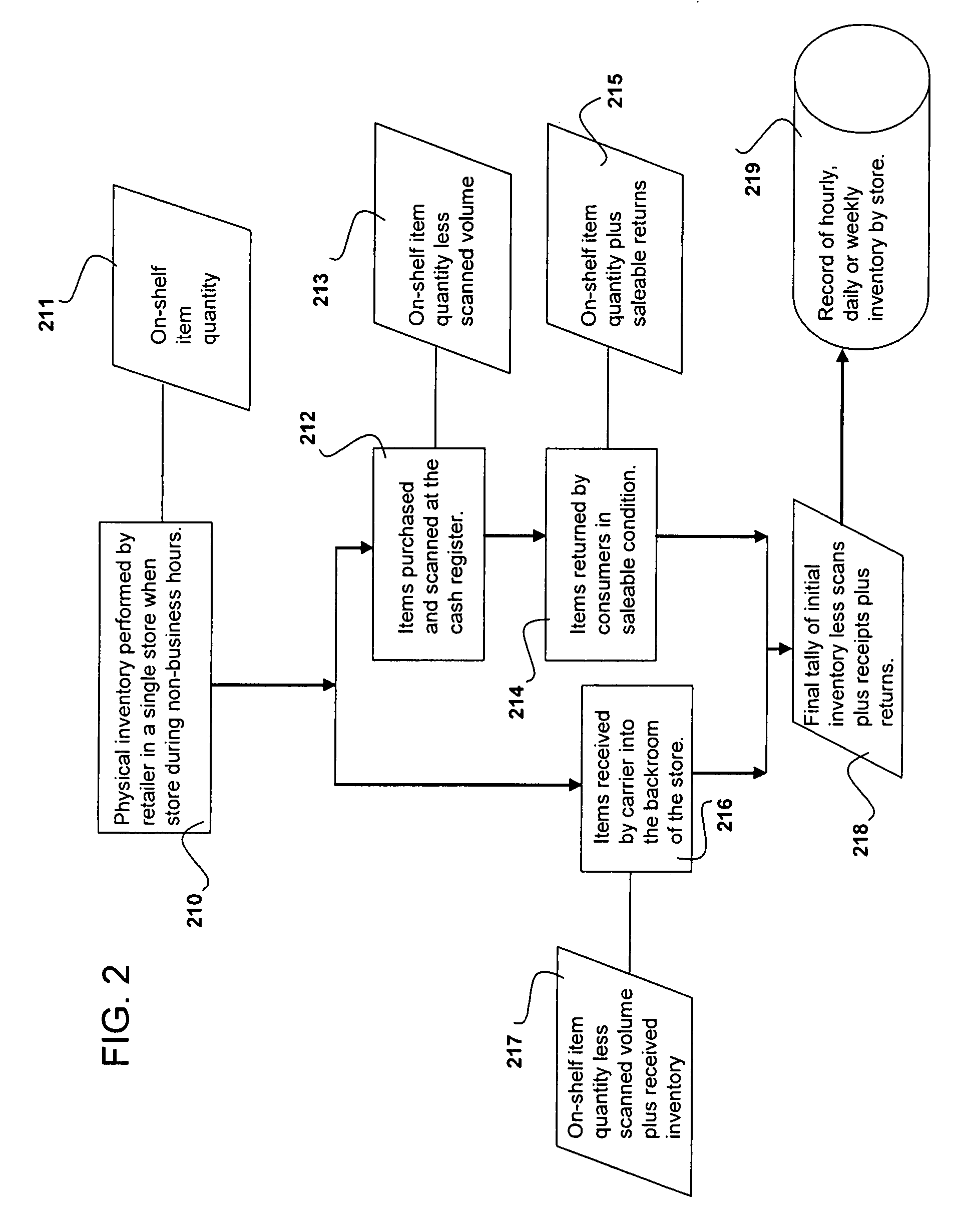System and method for identifying implicit events in a supply chain
- Summary
- Abstract
- Description
- Claims
- Application Information
AI Technical Summary
Problems solved by technology
Method used
Image
Examples
Embodiment Construction
[0024]FIG. 1 illustrates a contemporary product supply chain. A supply chain as from the perspective of a retailer would start at their manufacturers' (also known as suppliers or vendors) manufacturing facilities (‘plants’) (110), Typically, the items made in plants 110 would go to one or more distribution centers (DC) (111, 112) owned by the manufacturer, then on to a DC owned by the retailer (113), then on to a retail store (114). Some manufacturers may own just a single DC tier or layer (110), although FIG. 1 illustrates a more advanced supply chain where Tier 1, where more centralized DC's (110) are accompanied by another more remote series of Tier 2 DC's (111, 112). In this configuration, the most common product flow is shown (129) going via rail (115), freighter ship (117), or truck (116) to the Tier 1 DC (111). In some cases, product can flow directly from a plant 110 to a store (114) via a single carrier (123). Alternately, some other downstream flow to the retailer's DC (11...
PUM
 Login to View More
Login to View More Abstract
Description
Claims
Application Information
 Login to View More
Login to View More - R&D
- Intellectual Property
- Life Sciences
- Materials
- Tech Scout
- Unparalleled Data Quality
- Higher Quality Content
- 60% Fewer Hallucinations
Browse by: Latest US Patents, China's latest patents, Technical Efficacy Thesaurus, Application Domain, Technology Topic, Popular Technical Reports.
© 2025 PatSnap. All rights reserved.Legal|Privacy policy|Modern Slavery Act Transparency Statement|Sitemap|About US| Contact US: help@patsnap.com



